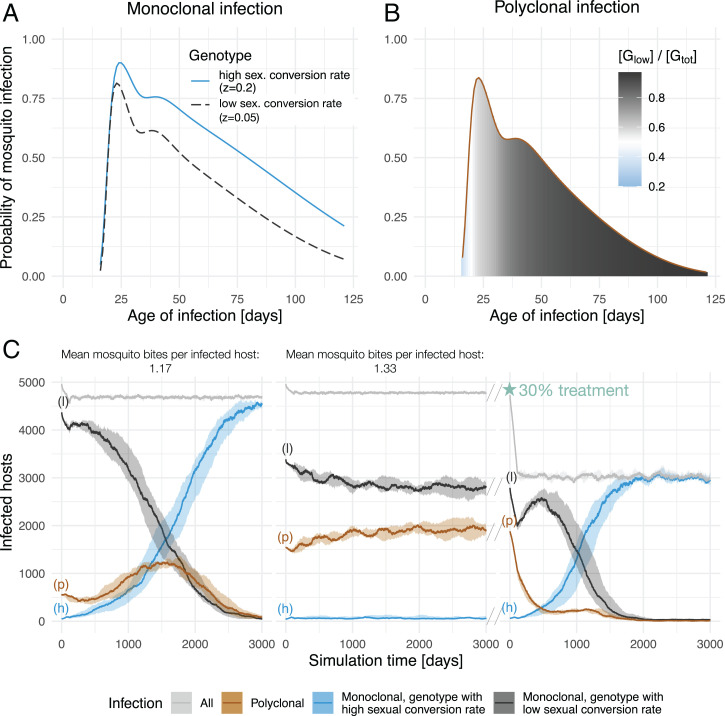Fig. 1.
Optimal sexual investment strategy in the population defined by within-host competition. (A and B) Infectiousness, as the probability of a feeding mosquito becoming infected, for monoclonal (A) and polyclonal (B) blood-stage infections. In monoclonal blood-stage infections (A), infectiousness is consistently greater for Shigh (dashed line, gray) parasites. In polyclonal blood-stage infections (B), the addition of within-host immune competition changes the optimal sexual investment strategy. Compared to Slow gametocytes (gray), Shigh gametocytes are in the majority in the early days but have lower overall infectiousness over the full course of the infection. The area under the curve is colored by the relative concentration of Slow gametocytes () over the total gametocytes concentration (). Higher Shigh gametocyte concentrations are indicated in blue, versus in gray for higher Slow gametocyte concentrations. (C) Number of infected hosts in the population (y axis), through time (x axis), assuming an average number of infectious mosquito bites per infected host of 1.17 (Left), 1.33 (Center), or 1.33 with 30% treatment (Right). Colors and labels indicate hosts infected with the lower sexually committing parasites (l) in black, higher sexually committing parasites (h) in blue, polyclonal infections (p) in brown, and the overall number of infected hosts in gray. Lines indicate the median and shaded area the minimum and maximum across five simulations.

